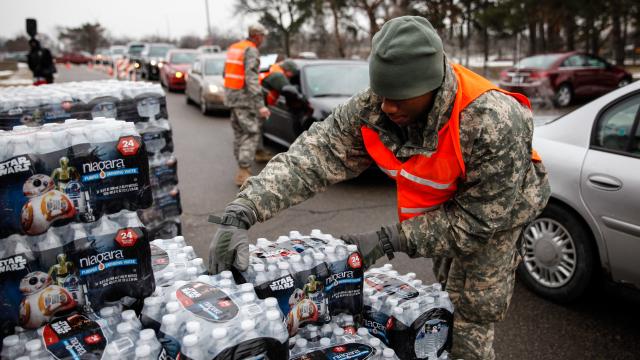More than 1 million U.S. residents are living without running water, and many of them live in large, wealthy cities, new research shows.
The new study, which was published in Proceedings of the U.S. National Academy of Sciences on Monday, used census data from 2013 to 2017 to determine that 1.1 million in the U.S. are water insecure. Seventy-three per cent of those folks were located in urban areas, and 47% were living in the U.S.’s 50 largest metropolitan areas. It points to another way huge inequalities sit in the midst of some of the most well-off places on Earth.
To learn more about who was most affected by the lack of access to both hot and cold water, the researchers looked at public data from the American Community Survey from the same period. They found that the highest rates of “plumbing poverty” were found in San Francisco — one of only two cities in the nation where the majority of households earn over $US100,000 ($142,070) a year. The city is also home to the third-largest population of billionaires in the world. Also among the cities with the highest rates were other wealthy metro areas like Portland, Oregon and Austin. The largest overall number of homes without running water are in the well-resourced cities of New York and Los Angeles.
Of course, it’s not the cities’ most well-off residents who lack working sinks and tubs. The researchers found a distinct racial discrepancy in who was most affected.
“Compared with the overall U.S. population, we find that unplumbed households are more likely to be headed by people of colour, earn lower incomes, live in mobile homes, rent their residence, and pay a higher share of their gross income toward housing costs,” the study said.
Specifically, the authors found that households headed by individuals of colour were nearly 35% more likely than white households to live without running water. “Put differently, more than 5 in 10 unplumbed households are headed by individuals of colour, despite making up a collective fewer than 4 in 10 households among the top 50 largest metros,” the authors wrote.
Unlike those with water access, most without piped water also spent more than 30% of their income to housing costs. The authors suspected their results pointed toward a link between water inaccessibility and unequal income distribution. To quantify this, they used a statistical metric known as the Gini coefficient and found that for every 10% increase in a U.S. city’s income gap, households were 1.5 times more likely to lack access to water.
Troublingly, these estimates are probably a conservative; the U.S. Census Bureau frequently has trouble accounting for people experiencing homelessness and renters, and routinely undercounts people of colour. The data also doesn’t account for water toxicity, which affects homes in cities across the country which do have running water that’s polluted.
The authors expect plumbing poverty could worsen in U.S. metro areas in the future, since rates of homeownership are dropping as rents and income gaps are rising. They don’t mention it, but the ever-worsening climate crisis also threatens to exacerbate plumbing poverty, because storms put increased stress on pipes and other water infrastructure and droughts put drinking water supplies at risk. At the same time, increasing extreme heat waves like those recently seen in the American West will make water access all the more important.
Fortunately, we’re not locked into this fate. Policymakers could stop municipalities from shutting off water as punishment for missed bills and invest in fixing water infrastructure to improve access for all Americans.
Earlier this year, representatives on Capitol Hill introduced the Water Affordability, Transparency, Equity and Reliability Act, which would ban water shutoffs and put billions of dollars in federal funding into assistance programs and water infrastructure repairs and upgrades each year. The new study suggests that leaders should also focus on measures to reduce inequality as a whole as a part of any water access policy program.
“Future research and policies for sustainable water access must directly address social inequality at the housing–water nexus if the global dream of ‘water for all’ is to be realised in the U.S.,” it said.
